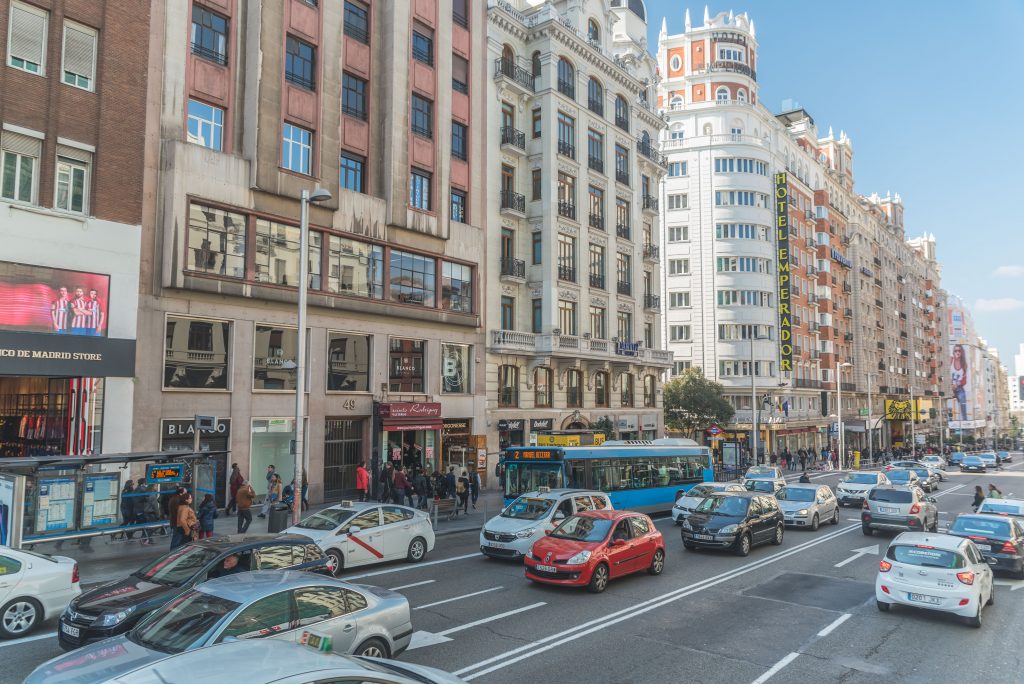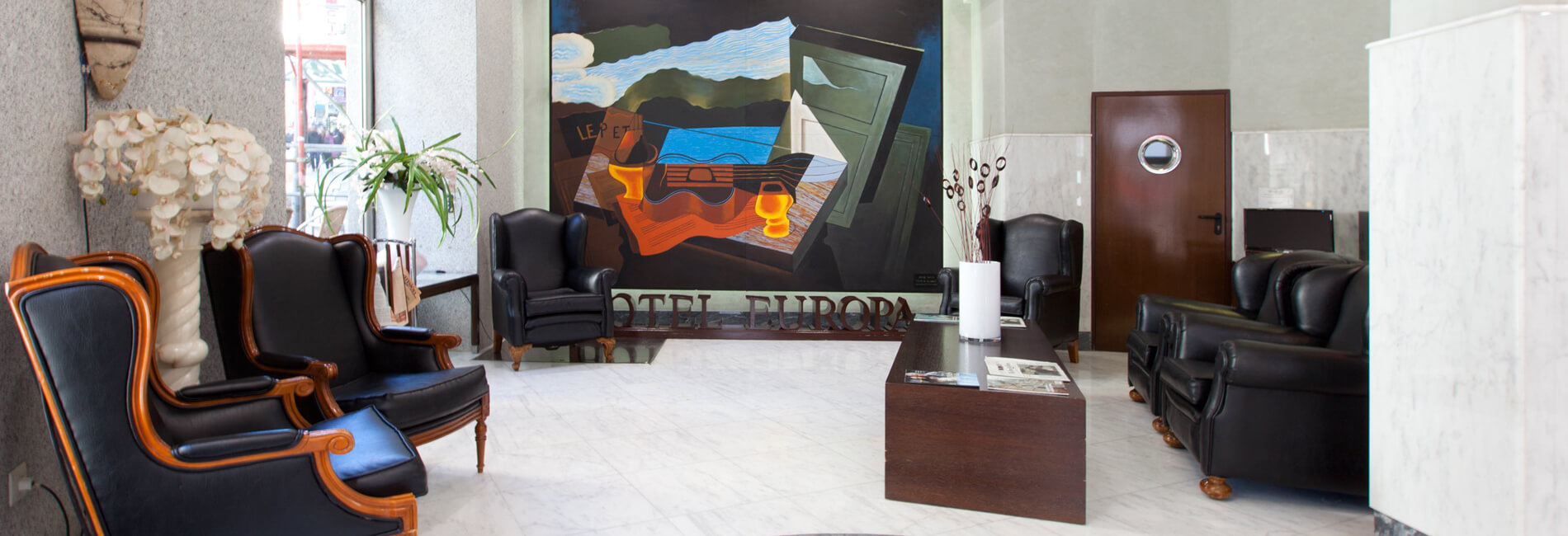5 curiosidades que quizá no conocías sobre la Gran Vía

Given that the Gran Vía is in the very heart of Madrid, connecting Plaza de España to Calle Alcalá at Plaza de Cibeles, it is one of the busiest avenues in the city. Here are five facts you may not have known about one of the city’s thoroughfares, located just a few minutes by foot from our hotel.
1) The cost of the Gran Vía
When the Gran Vía was built at the beginning of the 20th century, 300 homes had to be demolished, 14 streets disappeared and another 34 were shortened and 274 street lamps were eliminated. The stone and paving work, the sidewalks and the changes to the sewage system brought the total cost of the project to almost 29 million pesetas.
2) Why isn’t the Gran Vía straight?
According to the original plans of José López Sallaberry and Francisco Andrés Octavio, the Gran Vía was going to cut a straight path through the center of Madrid. The problem was that there were three churches in the way: the Church of San José, the Oratory of Caballero de Gracia and the now defunct Church of San Francisco de Borja. The architects decided to change its route to save the churches and that is why the Avenue curves at Plaza de Callao.
3) The avenue of a thousand names
In the barely 100 years that the Gran Vía has existed, it has received a wide variety of names, some official and others bestowed upon it by the people.
Its official names have included Avenida de Pi y Margall, Avenida de Eduardo Dato, Avenida de Rusia, Avenida de la Unión Soviética, Avenida de la CNT and Avenida de José Antonio. The names employed by ordinary folk include Avenida de los obuses or Avenue of the Shells and Avenida del quince y medio or Avenue Fifteen and a Half in reference to the number of bombs which fell on the Telefónica building during the Civil War, which at the time was being used as a military observatory. In 1981 it reclaimed its original name of Gran Vía.
4) The first metro line
Line 1 of the Madrid metro connected Cuatro Caminos to Puerta del Sol and on its first route there were eight stops. One of which was called, Red de San Luis, which now goes by Gran Vía.
5) Numbering changes
Another interesting piece of information is that the avenue’s numbering has not always been the same or, more precisely, it didn’t always go in the same direction. When it was inaugurated in 1917, the first stretch, between Alcalá and Red de San Luis, the numbering began at the latter and ended at the former. However, when the second stretch was built (from Red de San Luis to Plaza de Callao), the numbering had to be modified and the Metropolis building was used to mark the beginning of the avenue.
Categories: Guías Madrid



Leave a Comment